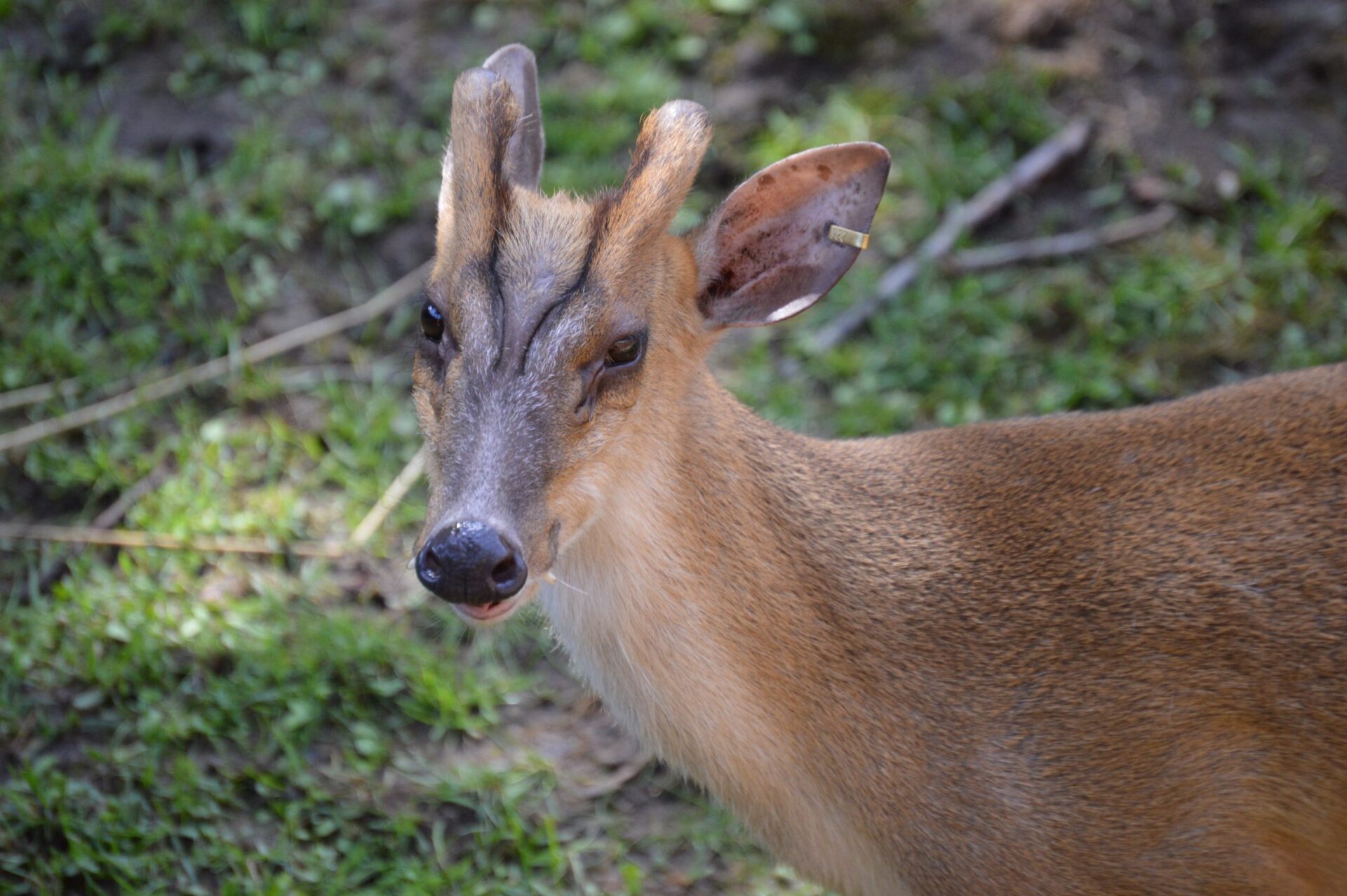Reeves' Muntjac

Basic Information:
Scientific Name: Muntiacus reevesi
Habitat: Naturally, Reeves’ Muntjac can be found in hilly, rocky, and wooded landscapes in Southeastern China and Taiwan. Today, muntjacs can also be found in England, Belgium, the Netherlands, and Ireland due to being introduced there in the 1900s.
Diet: Reeves’ muntjac eat leaves, fruit, bark, and fungi.
Size: 1.6 feet tall / 3.1 feet long
Weight: 22 to 40 pounds
Lifespan: 10 to 12 years in the wild. Up to 20 years in human care.
Distribution Map:
I.U.C.N. Conservation Status:

What does this mean?
Least Concern – a species determined by the International Union for Conservation of Nature (I.U.C.N.) to be pervasive, abundant, and thriving.
Our Reeves' Muntjac:
Xiao Yi (Male) – Born May 26, 2013
About Reeves' Muntjacs:
Commonly referred to as barking deer due to the sounds they make when scaring off predators, defending their territory, and initiating mating rituals, these small ungulates can be found naturally in southeastern China and Taiwan. However, due to human interference and introductions, they can now be found across the United Kingdom, Ireland, and parts of Europe as well. Typically found being by themselves or in pairs, muntjacs can be found grazing on bushes, berries, fungi, and grasses around their territories. Speaking off, they frequently mark their territories to deter other muntjacs using the two prominent, preorbital glands on their face. In fact, males will aggressively drive off trespassing males and can be quite aggressive about it. While their antlers may be small, they can be used to push and gouge threats and competition. If that fails, they also have a set of 2-inch long, downward pointing canine teeth that can cause some substantial damage when needed.
Did You Know?!
- Male muntjacs have a set of downward pointing canine teeth used for fighting. These are sometimes – although wrongly – referred to as “tusks.”
- Muntjac males have antlers which they shed annually.
- The gestation period for a muntjac is 7 months and females only birth 1 offspring. Baby muntjacs have spotted coats.
- Scientists are especially interested in muntjacs because each species – of which there are 12 including the Reeves’ muntjac – has slightly different features even though they all live in the same natural range in Asia.
- Reeves’ muntjacs have a long tongue that is used to strip leaves from bushes.
- Muntjacs are the oldest known deer species. Fossil remains date from 15 to 35 million years ago.
